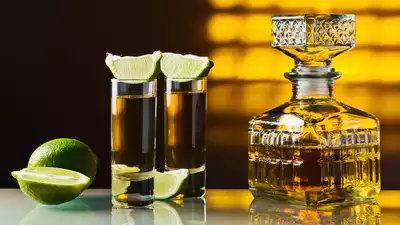Tequila, once regarded primarily as a party drink, is now appreciated for its complexity and craftsmanship. As the world celebrates International Tequila Day , the spotlight turns to the remarkable rise of tequila and agave spirits in India. In 2024, the popularity of these beverages has soared, paving the way for a broader appreciation of agave spirits.
According to Rakshay Dhariwal, Founder and Director of Maya Pistola Agavepura (Pistola), “The year 2024 has been celebrating the popularity of tequila and agave, paving the way forward for agave spirits as the larger category, with people delving deeper into understanding and exploring it.” But, what is the craze behind this popular agave spirit that historically hails from Mexico? We asked Vikram Achanta, founder & CEO of Tulleeho and co-founder of 30BestBarsIndia along with Kimberly Pereira, COO of Maya Pistola Agavepura and learnt about the shifting trends. But, before that, here’s a lowdown on what exactly is tequila and how it is made.

Tequila is a distilled spirit made from the blue agave plant, primarily in the area surrounding the city of Tequila in the state of Jalisco, Mexico. The beverage can only be called tequila if it’s produced in specific regions of Mexico, much like how true champagne can only come from the Champagne region of France. Tequila is characterised by its distinct taste, which ranges from sweet and fruity to earthy and spicy, depending on how it’s made and aged.
Tequila comes in several varieties, distinguished by the ageing process: Blanco (White or Silver): Clear and unaged, bottled immediately after distillation or aged for less than two months. Reposado (Rested): Aged in oak barrels for two months to one year, giving it a smoother flavour with hints of oak. Anejo (Aged): Aged for one to three years in small oak barrels, resulting in a darker colour and more complex flavours.
Extra Anejo (Extra Aged): Aged for over three years, offering deep, rich flavours and a dark amber hue. Here are some of the reasons why tequila is becoming popular..
. The Indian market is experiencing an influx of premium and craft tequila brands. These high-quality tequilas, often made from 100 per cent agave, offer a sophisticated drinking experience that appeals to discerning consumers.
The emphasis on artisanal production methods and unique flavour profiles has helped elevate tequila's status from a party drink to a luxury spirit. What is Mezcal and how it is different from tequila? Tequila has become a trendy spirit globally, partly due to endorsements by celebrities and its presence in popular culture. Indian consumers, who are increasingly influenced by global trends, are exploring tequila as a fashionable choice.
Celebrity-backed tequila brands have also garnered attention, adding to the allure and desirability of the spirit. Dhariwal adds, “Premium tequila and agave spirits, along with new celebrity-backed launches and luxury variants, are all the rage now and are helping agave as the parent category to expand rapidly. Consumers are beginning to appreciate the nuances of sipping high-quality agave spirits, and there seems to be specific interest in pure 100 per cent agaves.
Moreover, today's exposed and adventurous audience is excited about trying and tasting new-world non-Mexican agave spirits, thanks to their unique and diverse flavour profiles. As this category evolves, there will be a bigger focus on craft, additive-free and limited-edition agave spirits, and of course high-quality, unique collectables.” Beyond tequila, there is a growing curiosity about agave spirits as a category.
This includes mezcal and other agave-based liquors. Indian consumers are becoming more adventurous and interested in exploring the diversity within agave spirits, appreciating their complex flavours and the rich cultural heritage behind them. Dhariwal seconds this and said, “After all, agave spirits are made from plants that take anywhere between 8-12 years to mature - which means each bottle of a 100 per cent agave is a true labour of patience and love.
It is truly great to see the evolving appreciation for this extraordinary category.” The cocktail culture in India is booming, with a significant increase in the number of bars and restaurants offering innovative and high-quality cocktails. Tequila-based cocktails like Margaritas, Palomas, and the spicy Picante are becoming popular choices among Indian consumers.
The versatility of tequila in cocktails makes it a favourite among bartenders and drinkers alike. Kimberly further confirms this trend and said, “Whether choosing to sip agaves on ice, or customising classic cocktails with an agave, tequila, or mezcal base - consumers are all for discovering this category. We can safely say that agave culture has deeply resonated with the audience mindset, and they are eager to celebrate Agave as a ‘spirit of choice’.
” She further shared that “Trends indicate that among the highest-ordered cocktails this year, Palomas and Margaritas – both classic agave-based cocktails - are top picks globally. Meanwhile, in India, the spicy Picante leads the way—some are even dubbing 2024 as the 'Year of the Picante', which is made with a tequila or agave base. Agave spirits are steadily influencing and reshaping beverage experiences – pointing ahead to an interesting future.
” As more Indian consumers become health-conscious, they are gravitating towards spirits perceived to be made with natural ingredients. Tequila, particularly those made from 100 per cent agave, is seen as a purer option compared to other spirits that might contain additives and preservatives. This perception of tequila as a cleaner spirit has contributed to its growing popularity among health-conscious drinkers.
Vikram, underscores the deepening enthusiasm for tequila in India. He states, “Tequila, and Agave as the larger phenomenon, have caught on incredibly well in India. It is interesting to see how deep the enthusiasm for this spirit category goes, which has not only resulted in widespread industry acceptance, but also increased demand from consumers.
As bars and beverage entities look to include more variants of tequila and agave into their portfolios, consumers are now seeking more experiential engagements with these spirits. Thus, community-building becomes the next phase of engagement for consumers. As tequila and agave spirits continue to reshape beverage experiences in India, the future looks promising.
This growing appreciation for the craftsmanship, patience, and love that go into every bottle is a testament to the enduring appeal of agave spirits. With a keen focus on quality and unique flavour profiles, tequila and agave are not just drinks of choice but are becoming integral to India’s vibrant and evolving beverage culture. The growing interest in tequila among Indian consumers is also evident from recent statistics.
According to a report by Euromonitor International, tequila consumption in India has seen a significant annual growth rate of over 12 per cent in the past five years. This surge is fuelled by the rising popularity of premium and craft tequila brands, as well as the increasing influence of global drinking trends. A report by the International Wine and Spirits Research (IWSR) highlights that tequila is becoming a favoured choice among the urban youth and middle-aged consumers in metropolitan areas, driven by a burgeoning cocktail culture and the perception of tequila as a sophisticated and health-conscious option.
These trends indicate a robust and growing market for tequila in India. Tequila production is a meticulous process that combines traditional methods with modern techniques. Here’s a detailed look at how this iconic spirit is made: Tequila begins with the blue agave plant, which takes around 7-10 years to mature.
The agave is harvested by skilled workers known as jimadores. They use a tool called a coa to cut the leaves off the plant, revealing the pina (the heart of the agave). The pinas are then cooked to convert the complex carbohydrates into fermentable sugars.
Traditionally, this is done in large, brick ovens called hornos, where the pinas are slow-cooked for up to 48 hours. Some producers use autoclaves, which are large pressure cookers that can speed up the cooking process. After cooking, the pinas are crushed to extract the agave juice.
This can be done using traditional stone mills known as tahonas or more modern roller mills. The extracted juice, called aguamiel, is collected and transferred to fermentation tanks. Tequila Day 2021: A complete guide to one of the oldest distilled spirits The agave juice is fermented in large vats, often made of wood or stainless steel.
Yeast is added to convert the sugars into alcohol. This process can take several days and is crucial for developing the unique flavours of the tequila. 4 Reasons to choose Tequila as your poison, if you are trying to lose weight The fermented liquid, now called mosto, is distilled twice in copper pot stills or stainless steel stills.
The first distillation, known as the ordinario, produces a liquid with low alcohol content. The second distillation, called rectificación, refines the liquid into tequila with an alcohol content of around 40-55 per cent. Depending on the type of tequila being produced, the spirit may be aged in oak barrels.
Blanco tequila is typically bottled immediately or after a short resting period, while reposado, anejo, and extra anejo tequilas are aged for varying lengths of time in oak barrels to develop their complex flavours and colours. George Clooney’s tequila brand listed among the world’s most valuable spirits Finally, the tequila is filtered and bottled. Premium brands often use elaborate packaging to reflect the quality and craftsmanship of the spirit inside.
(Images courtesy: Canva).



















